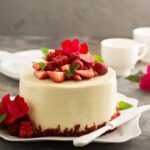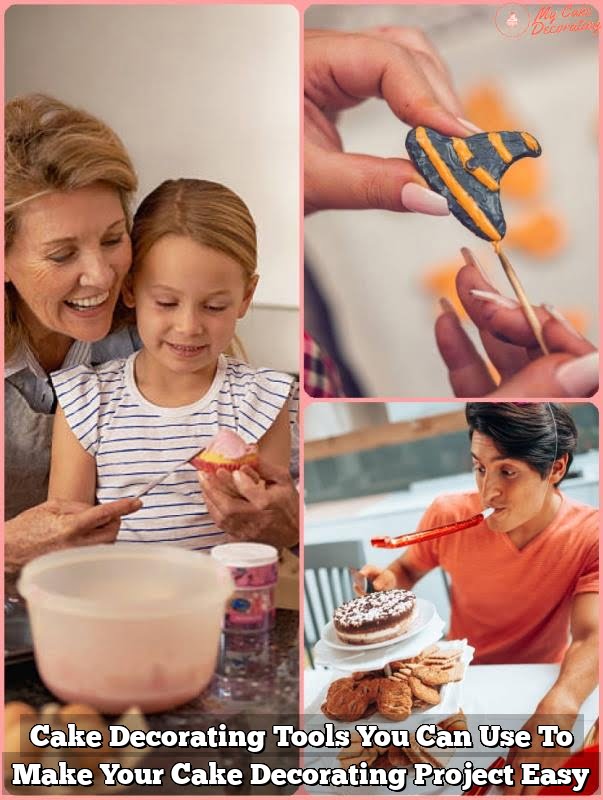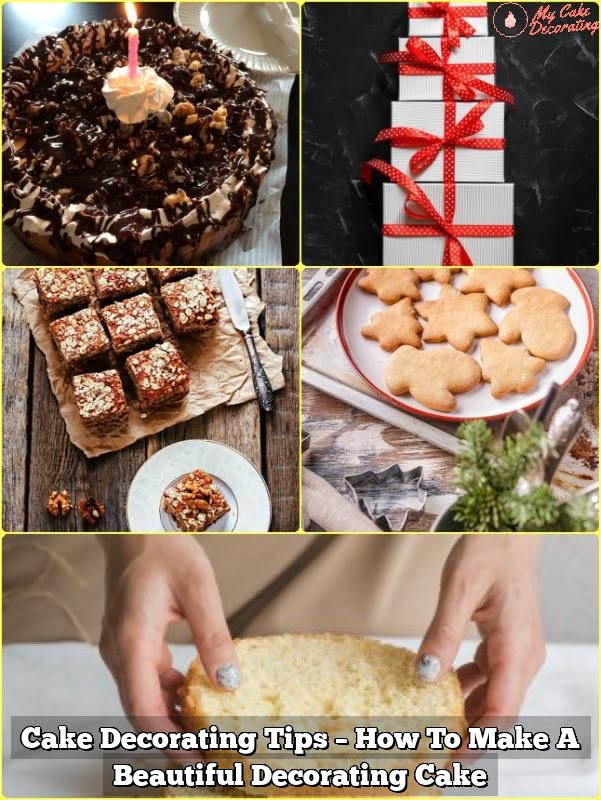Are you ready to take your cake decorating game to the next level? In this article, we will explore the ins and outs of making gum glue for cake decorating. Whether you’re a beginner or an experienced baker, knowing how to make your own gum glue can come in handy for various creative projects in the kitchen.
Gum glue is an essential tool in the world of cake decorating. It is used to adhere delicate decorations, such as fondant and gum paste, to the surface of cakes. Understanding how to make gum glue at home can save you time and money, while also giving you more control over the quality and ingredients used in your decorating process.
In the following sections, we will delve into the key ingredients for making gum glue, provide a step-by-step guide on creating your own at home, offer tips for achieving the perfect consistency, discuss practical uses of gum glue in cake decorating, explore alternatives to gum glue, and provide recommendations for high-quality products available in the market. So let’s get started on mastering the art of gum glue for cake decorating.
Understanding the Ingredients for Gum Glue
Gum glue is an essential component in cake decorating, and understanding the ingredients that go into making it is crucial for achieving the perfect consistency and adhesion. The main ingredients for gum glue are simple and easily accessible, making it possible to make this handy tool at home.
The primary ingredient in gum glue is edible gum paste or tylose powder, which acts as a thickening agent and provides the necessary adhesive properties. Another key ingredient is water, which helps to dissolve the gum paste or tylose powder and create a workable glue-like substance. Some recipes also call for a small amount of light corn syrup or liquid glucose to improve the elasticity and pliability of the gum glue.
Step-by-Step Guide on Making Gum Glue at Home
To make gum glue for cake decorating at home, follow these simple steps:
- Measure out 1 teaspoon of edible gum paste or tylose powder.
- In a small bowl, add 3-4 tablespoons of room temperature water.
- Sprinkle the edible gum paste or tylose powder over the water and let it sit for about 10 minutes to allow it to dissolve.
- Gently stir the mixture until the powder is fully dissolved, creating a smooth and slightly thickened glue.
With these basic ingredients and easy-to-follow steps, you can create your own gum glue for cake decorating right in your own kitchen. Understanding these ingredients gives you the power to customize your gum glue based on your specific decorating needs. Experiment with different ratios of gum paste or tylose powder to water to achieve the perfect consistency for your projects.
By mastering the art of making gum glue at home, you can elevate your cake decorating game and ensure that all your fondant decorations stay securely in place. Discovering how to make gum glue for cake decorating opens up a world of creative possibilities and allows you to take full control of your decorating process.
Step-by-Step Guide on Making Gum Glue at Home
Making gum glue at home is a cost-effective and efficient way to enhance your cake decorating skills. With just a few simple ingredients, you can create a durable adhesive that will securely attach fondant, gum paste, and other decorations to your cakes.
To make gum glue for cake decorating at home, follow these easy steps:
- Gather the necessary ingredients: tylose powder (also known as CMC powder) and warm water.
- In a small bowl, mix 1/4 teaspoon of tylose powder with 2 tablespoons of warm water. Stir the mixture thoroughly until the tylose powder is fully dissolved.
- Allow the mixture to sit for about an hour, stirring occasionally. You will notice that the mixture will thicken over time, creating a gel-like consistency. This is your homemade gum glue.
Making your own gum glue at home allows you to control the quality and quantity of the adhesive, ensuring that you always have a fresh supply on hand for your cake decorating projects. Additionally, it’s a cost-effective alternative to purchasing pre-made gum glue from stores.
By following this simple recipe, you can easily create a reliable adhesive that will help elevate your cake decorating game and give your creations a professional finish. So why not give it a try and make your own gum glue for cake decorating today?
Tips for Achieving the Perfect Consistency
Achieving the perfect consistency for gum glue is essential for successful cake decorating. The right consistency ensures that your decorations stay in place and adhere well to the cake surface. Here are some tips on how to achieve the perfect consistency when making gum glue for cake decorating.
First, it’s important to start with the right ratio of ingredients. Typically, gum glue is made by combining a small amount of tylose powder or gum tragacanth with water. For the perfect consistency, start by adding a small amount of tylose powder to the water and then mix it well. If the mixture seems too thin, gradually add more tylose powder until you reach the desired thickness.
Another tip for achieving the perfect consistency is to let the gum glue mixture rest. After mixing the ingredients, allow the gum glue to sit for at least an hour or longer. This allows the tylose powder to fully dissolve and thicken the mixture, resulting in a more cohesive and adhesive gum glue.
Lastly, it’s important to consider temperature and humidity when making gum glue for cake decorating. If your environment is warm and humid, you may need to use slightly less water or more tylose powder to achieve the right consistency. On the other hand, if it’s dry and cool, you may need to add a bit more water to prevent the gum glue from becoming too thick.
By following these tips, you can ensure that your homemade gum glue has the perfect consistency for all your cake decorating needs. Mastering this crucial element will elevate your cake decorating game and allow you to create beautiful and secure decorations that will impress any recipient of your sweet creations.
Practical Uses of Gum Glue in Cake Decorating
Gum glue is a versatile and essential tool for cake decorating, as it allows decorators to securely attach fondant, gum paste, and other decorations to their cakes. This adhesive is especially useful for intricate designs that require precise placement of delicate embellishments. In this section, we will explore the practical uses of gum glue in cake decorating and provide tips on how to use it effectively.
One practical use of gum glue in cake decorating is attaching fondant or gum paste decorations to the surface of the cake. Whether it’s flowers, figurines, or other intricate designs, gum glue provides a strong bond that ensures your decorations stay in place. Additionally, gum glue can be used to repair any cracks or breaks in fondant or gum paste decorations, making it an invaluable tool for fixing small mishaps during the decorating process.
Another practical application of gum glue in cake decorating is securing layers of cake together. When assembling tiered cakes, decorators often use gum glue between layers to prevent shifting and ensure stability. This not only helps the cake maintain its structure but also provides additional support when transporting the finished product.
In addition to attaching decorations and layering cakes, gum glue can also be used to adhere edible glitter, sugar crystals, or dragees onto the surface of the cake. This adds a touch of sparkle and elegance to your creations. With the right technique and proper application of gum glue, decorators can achieve stunning results that elevate their cake designs.
| Practical Uses | Benefits |
|---|---|
| Attaching fondant or gum paste decorations | Provides a strong bond for secure placement |
| Securing layers of cake together | Prevents shifting and ensures stability |
| Adhering edible glitter or sugar crystals | Adds sparkle and elegance to cake designs |
Alternatives to Gum Glue for Cake Decorating
When it comes to cake decorating, gum glue is often a go-to adhesive for securing edible decorations and fondant details onto cakes. However, there are instances when you may need an alternative to gum glue. Whether it’s due to dietary restrictions, availability of ingredients, or simply wanting to explore other options, there are several alternatives that can be used in place of gum glue.
Royal Icing
Royal icing, made from powdered sugar and egg whites or meringue powder, is a classic choice for attaching decorations to cakes. Its thick consistency allows for easy application and strong adhesion, making it a reliable alternative to gum glue. Additionally, royal icing dries hard and holds decorations in place securely.
Edible Glue
Commercially available edible glue is another option for cake decorators looking for an alternative to gum glue. This ready-made adhesive is designed specifically for use with edible decorations and provides a quick and convenient solution for attaching fondant pieces, sugar flowers, and other embellishments onto cakes.
Fondant Adhesive
For those working with fondant-covered cakes, leftover fondant trimmings can be repurposed into a simple adhesive. By mixing small pieces of fondant with water until a paste-like consistency is achieved, you can create a homemade fondant adhesive that works effectively for sticking fondant details onto the cake’s surface.
By exploring these alternatives to gum glue, you can find the best option that suits your specific needs and preferences when it comes to cake decorating. Whether it’s royal icing, edible glue, or homemade fondant adhesive, each alternative offers its own unique benefits and can elevate your cake decorating game in different ways.
Storing and Preserving Gum Glue for Future Use
Proper Storage
After making a batch of gum glue for cake decorating, it is important to store it properly to ensure its longevity. The best way to store gum glue is in an airtight container that is kept at room temperature. Avoid exposing it to extreme temperatures or direct sunlight, as this can alter its consistency and effectiveness.
Preservation Tips
To extend the shelf life of your homemade gum glue, consider adding a few drops of white vinegar to inhibit the growth of mold and bacteria. Additionally, some decorators recommend adding a small amount of glycerin to help keep the gum glue pliable and prevent it from drying out too quickly.
Freezing Gum Glue
If you find yourself with excess gum glue that you want to preserve for future use, freezing it can be an option. Simply transfer the gum glue into an airtight container or plastic bag, remove as much air as possible, and place it in the freezer. When you’re ready to use it again, let it thaw at room temperature and knead it gently before applying it to your cake.
By following these storage and preservation tips, you can ensure that your homemade gum glue remains usable for an extended period, saving you time and effort when preparing for your next cake decorating project.
Recommendations for High-Quality Gum Glue Products in the Market
When it comes to cake decorating, the quality of your gum glue can make a big difference in the final result. While making gum glue at home is a popular option for many bakers, there are also high-quality products available in the market that can save you time and effort. Here are some recommendations for top-notch gum glue products that will elevate your cake decorating game.
One of the most popular gum glue products in the market is “Tylose Powder.” This product is known for its reliability and ease of use. It can be easily mixed with water to create a strong adhesive that is perfect for securing fondant decorations, attaching edible embellishments, and even building structural elements for your cakes.
Another excellent choice is “CMC Powder.” This product is highly versatile and can be used not only as a gum glue but also as a stabilizer for fondant and gum paste. Its strong binding properties make it a favorite among professional bakers and cake decorators.
For those looking for a ready-made solution, “Edible Glue” is a convenient option. This product comes in a small bottle with a precision tip, making it easy to apply with accuracy. It is perfect for intricate details and delicate decorations on cakes.
In addition to these specific products, it’s important to remember that many reputable baking supply brands offer their own versions of gum glue. When choosing a product, always look for one that is labeled specifically for cake decorating and edible use.
| Gum Glue Product | Description |
|---|---|
| Tylose Powder | A reliable and easy-to-use powder that creates strong adhesive when mixed with water. |
| CMC Powder | Versatile powder that not only acts as a gum glue but also serves as a fondant and gum paste stabilizer. |
| Edible Glue | Ready-made solution in a convenient bottle with precision tip for intricate details and delicate decorations on cakes. |
Troubleshooting Common Issues When Using Gum Glue
When using gum glue for cake decorating, it’s common to encounter some issues that may affect the overall appearance and quality of your creations. However, knowing how to troubleshoot these issues can help you overcome them and ensure that your cake decorating process goes smoothly.
One common issue when using gum glue is the consistency. If your gum glue is too thick, it may not spread evenly or adhere properly to the fondant or gum paste. On the other hand, if it’s too thin, it might not hold the decorations in place effectively.
To address this issue, you can adjust the consistency by adding a small amount of water or powdered sugar to achieve the desired texture. It’s important to do this gradually while mixing continuously until you reach the right consistency.
Another issue that cake decorators often face with gum glue is its drying time. If the gum glue takes too long to dry, it can cause decorations to shift or slide off the cake.
On the contrary, if it dries too quickly, there may not be enough time to make necessary adjustments. To troubleshoot this problem, consider adding a small amount of tylose powder to the mixture as it can help speed up the drying process without compromising its adhesive properties.
Furthermore, if you notice that your gum glue is not adhering well to certain types of decorations or surfaces, you may need to assess whether there are any contaminants present on those surfaces. Oils or greases from previous handling can interfere with the adhesion of gum glue. In such cases, wiping the surface with a small amount of alcohol before applying the gum glue can help improve its adherence.
Understanding how to troubleshoot common issues when using gum glue for cake decorating ensures that you can overcome any challenges and achieve professional-looking results for your creations. By being mindful of these troubleshooting techniques, you’ll be able to elevate your cake decorating game and create stunning designs every time.
Conclusion
In conclusion, knowing how to make gum glue for cake decorating can truly elevate your game in the world of confectionery art. By understanding the importance of gum glue and its practical uses in cake decorating, you have taken the first step towards creating stunning and professional-looking cakes right in your own kitchen.
Whether you are a beginner or an experienced baker, the step-by-step guide on making gum glue at home provides you with a cost-effective solution that enhances the quality of your creations. By mastering the process and achieving the perfect consistency, you can confidently tackle intricate designs and delicate decorations without worrying about them falling apart.
Furthermore, by learning about alternative options for gum glue and troubleshooting common issues when using it, you have gained valuable knowledge that will help you navigate any challenges that may arise in your cake decorating endeavors. With high-quality gum glue products recommended for those who prefer convenience, there is something for everyone to take their skills to the next level. So go ahead, experiment with different techniques and designs using homemade gum glue – your cakes will thank you.

Welcome to my blog about home and family. This blog is a place where I will share my thoughts, ideas, and experiences related to these important topics. I am a stay-at-home mom with two young children. I hope you enjoy reading it! and may find some helpful tips and ideas that will make your home and family life even better!





